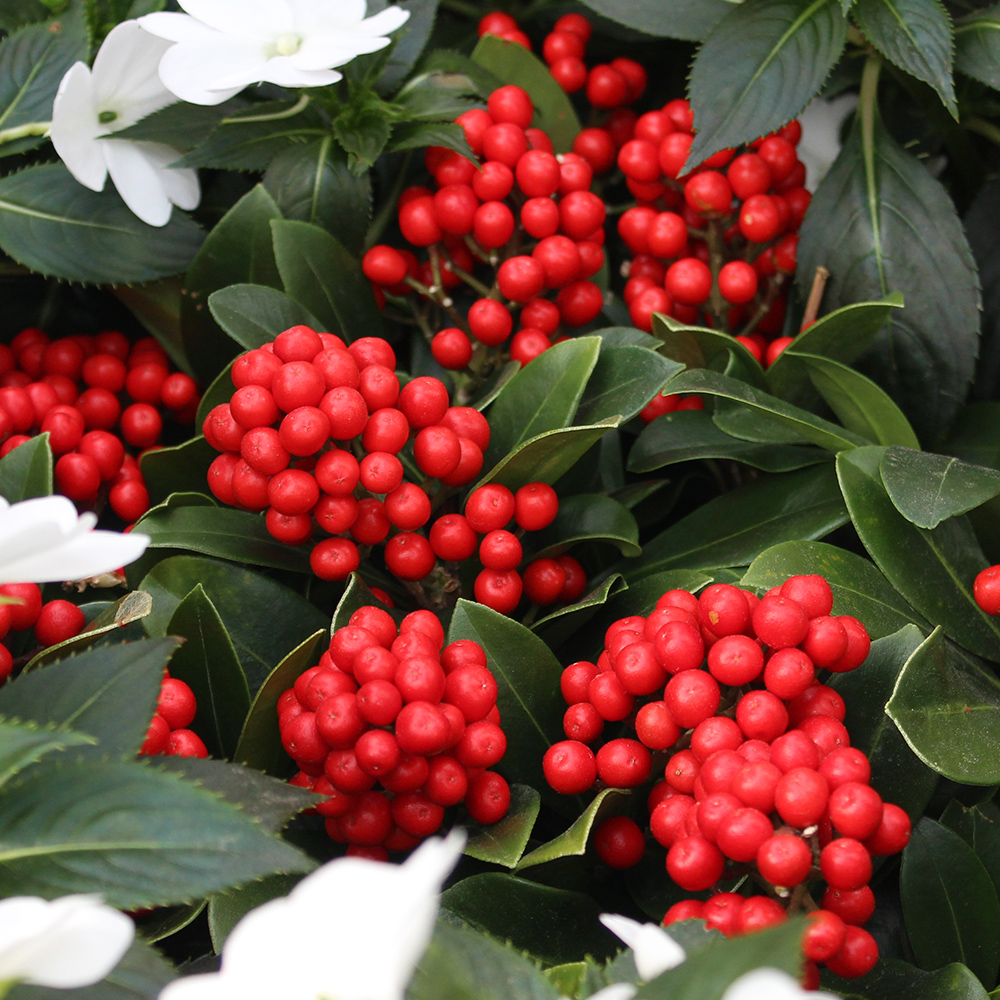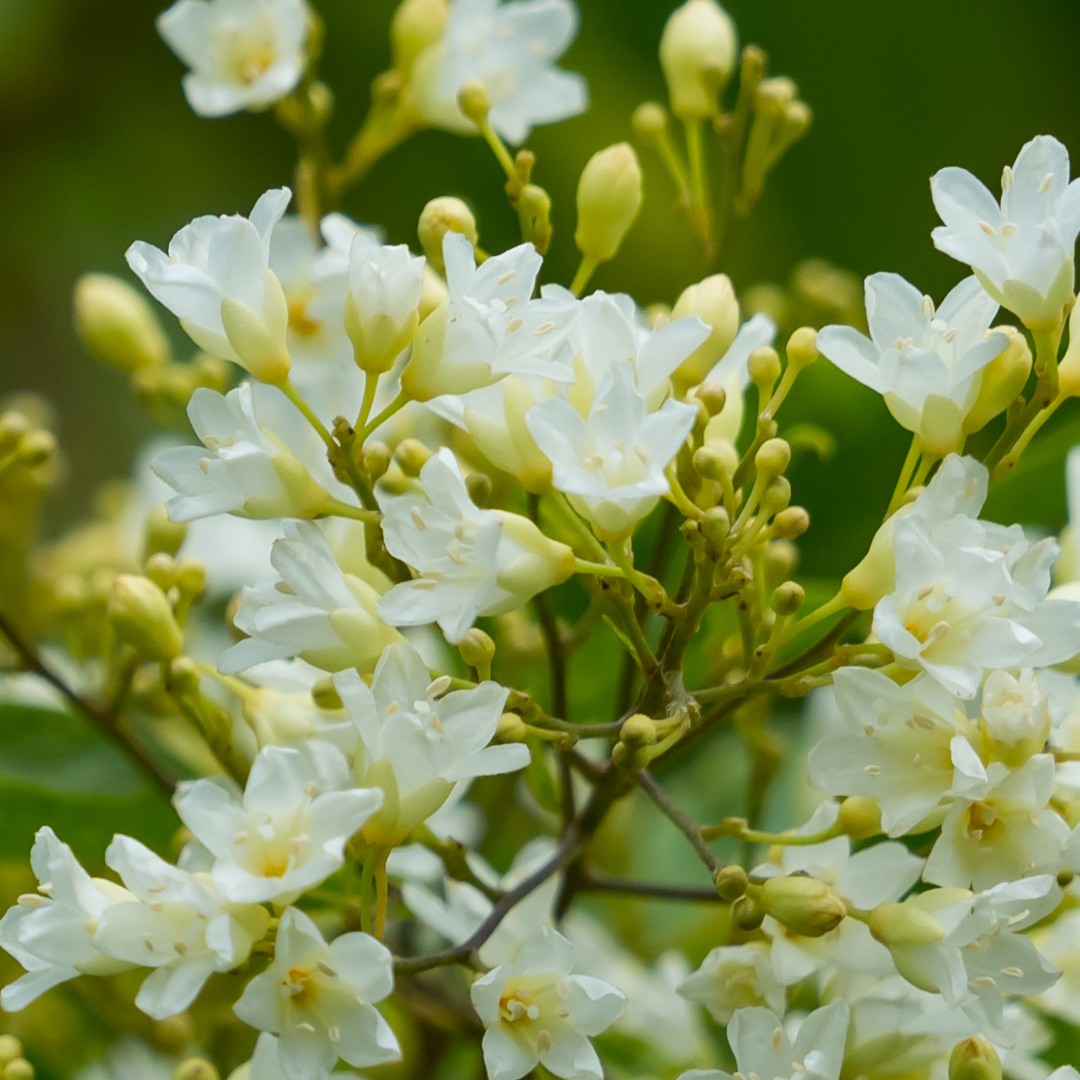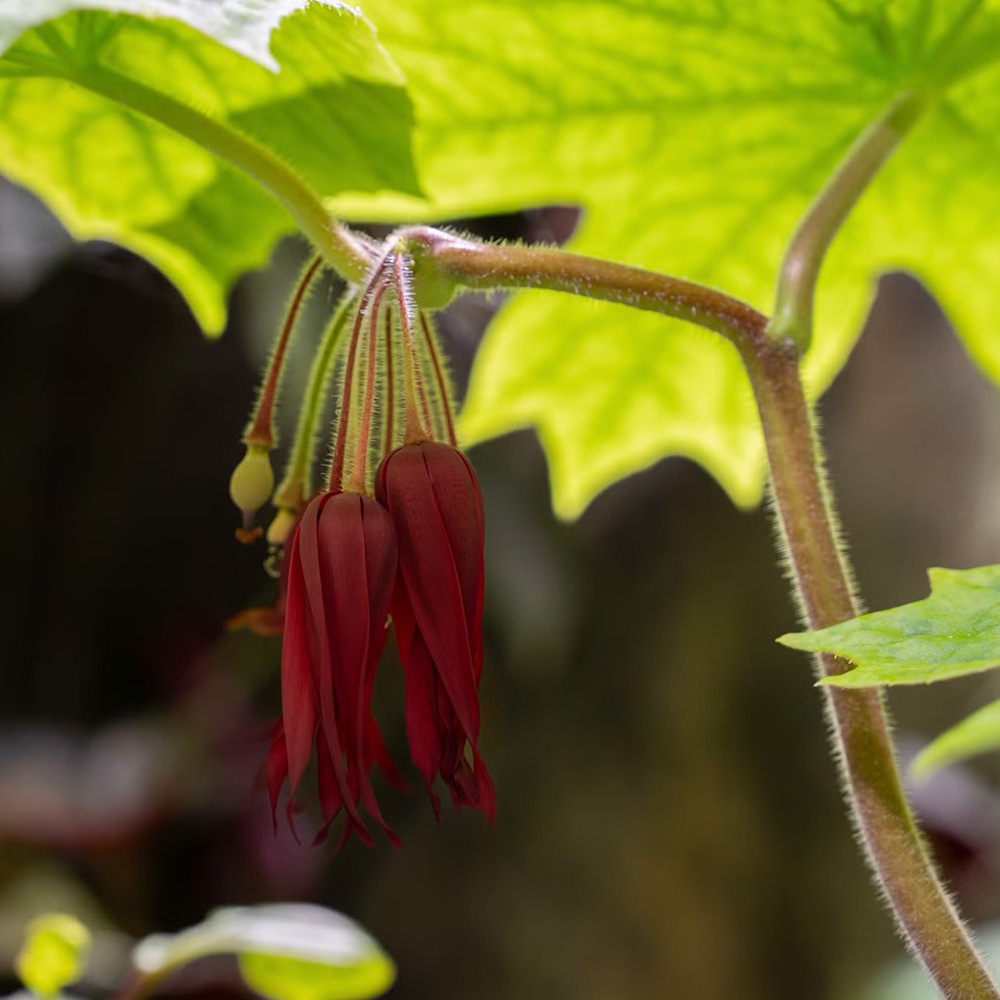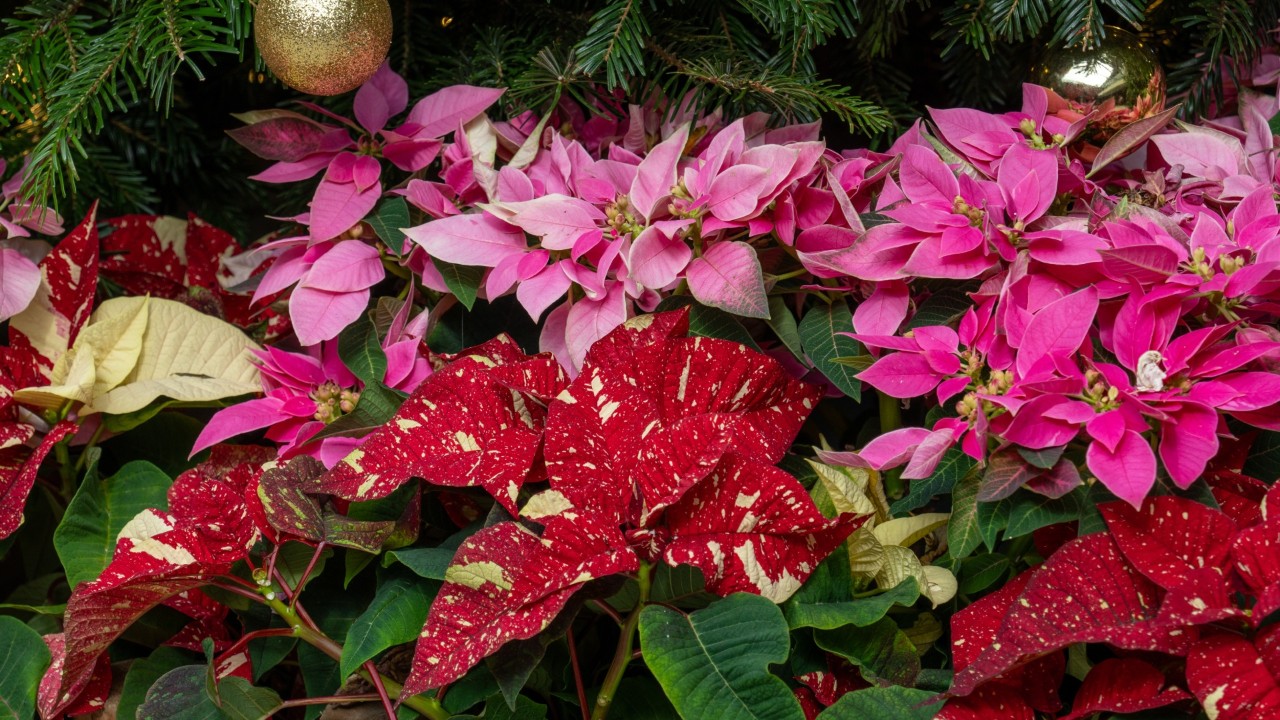 Euphorbia hybrid Princettia ‘Midi Hot Pink’ and Euphorbia pulcherrima ‘Red Glitter’ featured under a Christmas tree in Poinsettia Wishes.
Euphorbia hybrid Princettia ‘Midi Hot Pink’ and Euphorbia pulcherrima ‘Red Glitter’ featured under a Christmas tree in Poinsettia Wishes.
In the wild, poinsettias can grow up to 4 meters tall! Native to Mexico and Central America, the poinsettia (Euphorbia pulcherrima) is popular for its showy red bracts (modified leaves) during the festive season. Their specialised inflorescences at the center of the bracts, is called a cyathium. Each cyathium produces a single female flower and many male flowers. The yellow structures you see on the side are glands that secrete nectar. They have no petals, hence the brightly coloured bracts around each cyathium to aid in attracting pollinators, which are thought to be birds and insects, though shockingly little is known about the pollination ecology of wild poinsettias.
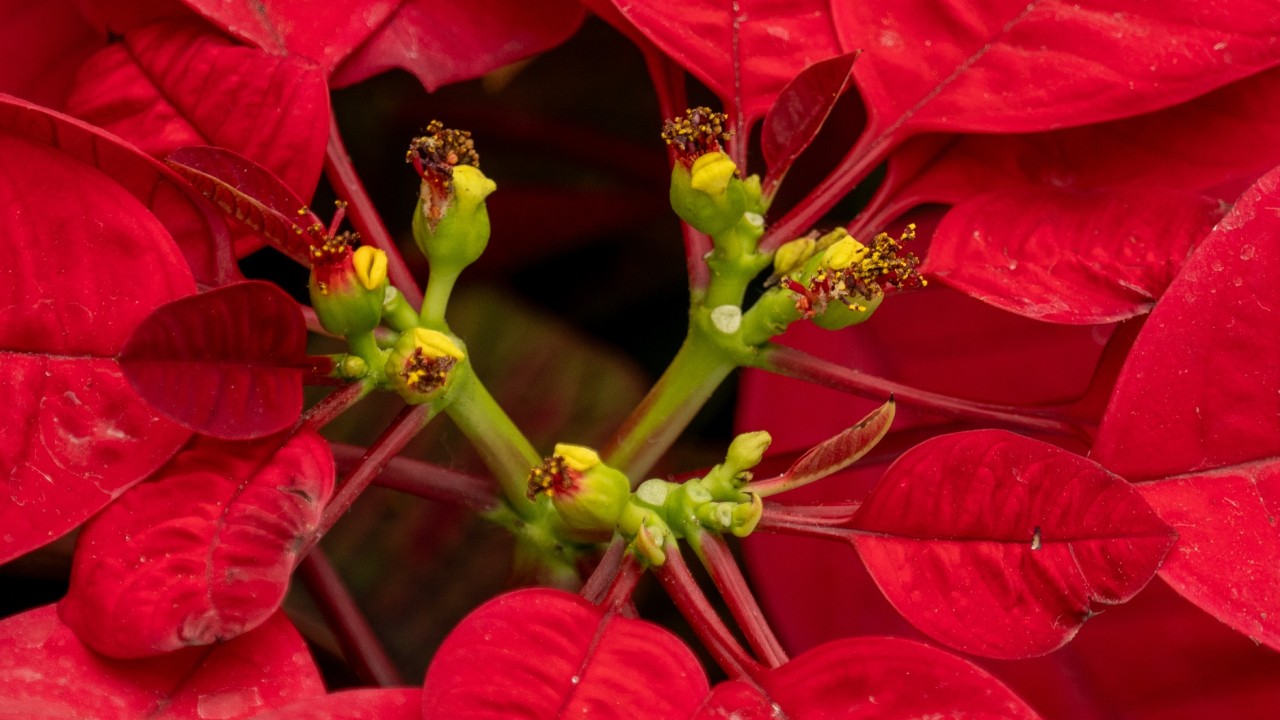 Close up of a poinsettia inflorescence (cyathium).
Close up of a poinsettia inflorescence (cyathium).
In order for a poinsettia plant to produce its coloured bracts, the plant has to first produce flowers. Poinsettias require around 12 to 14 hours of darkness for 30 to 50 uninterrupted days to initiate flowering, hence they are also known as short day plants. This simulates their natural flowering stimulus by the shortening of day length as summer transitions into autumn. During horticultural production of poinsettias, light interruption during the floral initiation stage may result in premature development of the cyathium, which will also affect the quality of the bracts produced. In cultivation, light control is used to schedule the flowering time of poinsettias to ensure that the plants are blooming by the festive season.
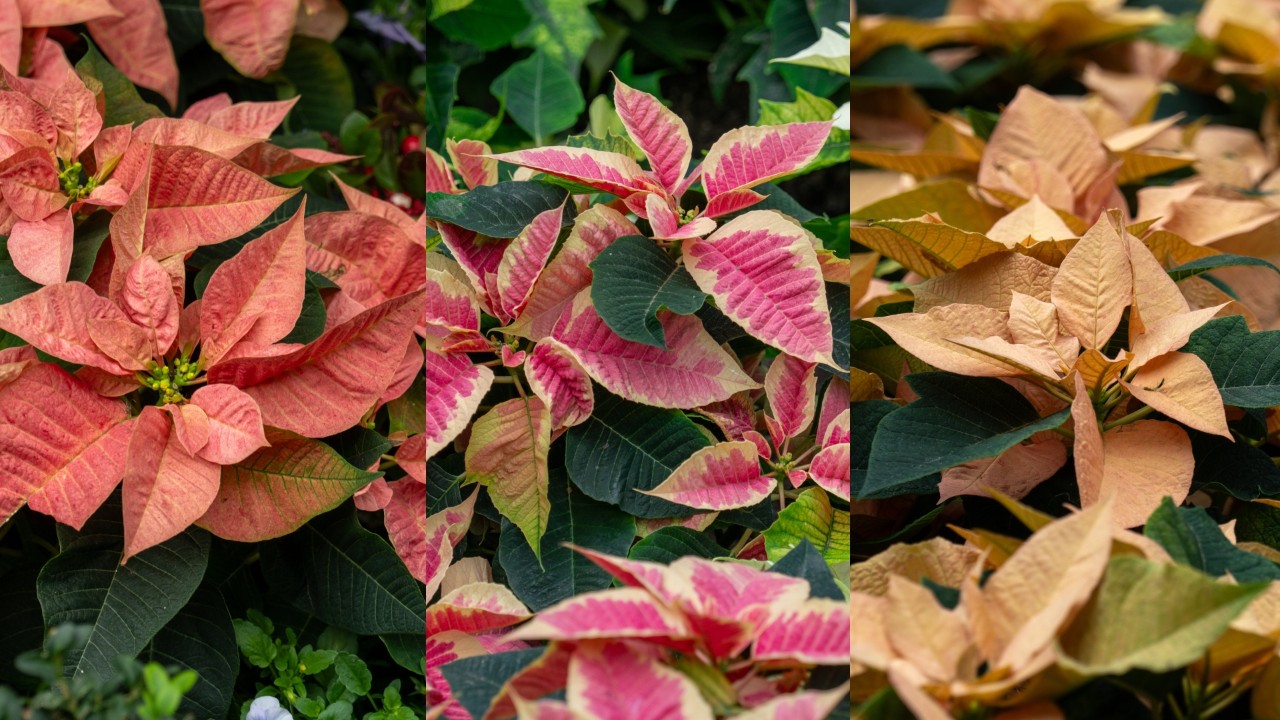 From left to right: Euphorbia pulcherrima cultivars 'Viking Cinnamon’, ‘Beauty Marble’, and ‘Autumn Leaves’ are great examples of the diversity of colours now available in poinsettia cultivars.
From left to right: Euphorbia pulcherrima cultivars 'Viking Cinnamon’, ‘Beauty Marble’, and ‘Autumn Leaves’ are great examples of the diversity of colours now available in poinsettia cultivars.
Hybridisation has allowed for over a hundred varieties of poinsettia to be cultivated since its rise in popularity in the early 1900s. Not only are they cultivated to produce differently coloured bracts, but they are also bred to produce plants with better growing qualities such as improving bract longevity, initiate early flowering, increasing branching consistency, so on and so forth.
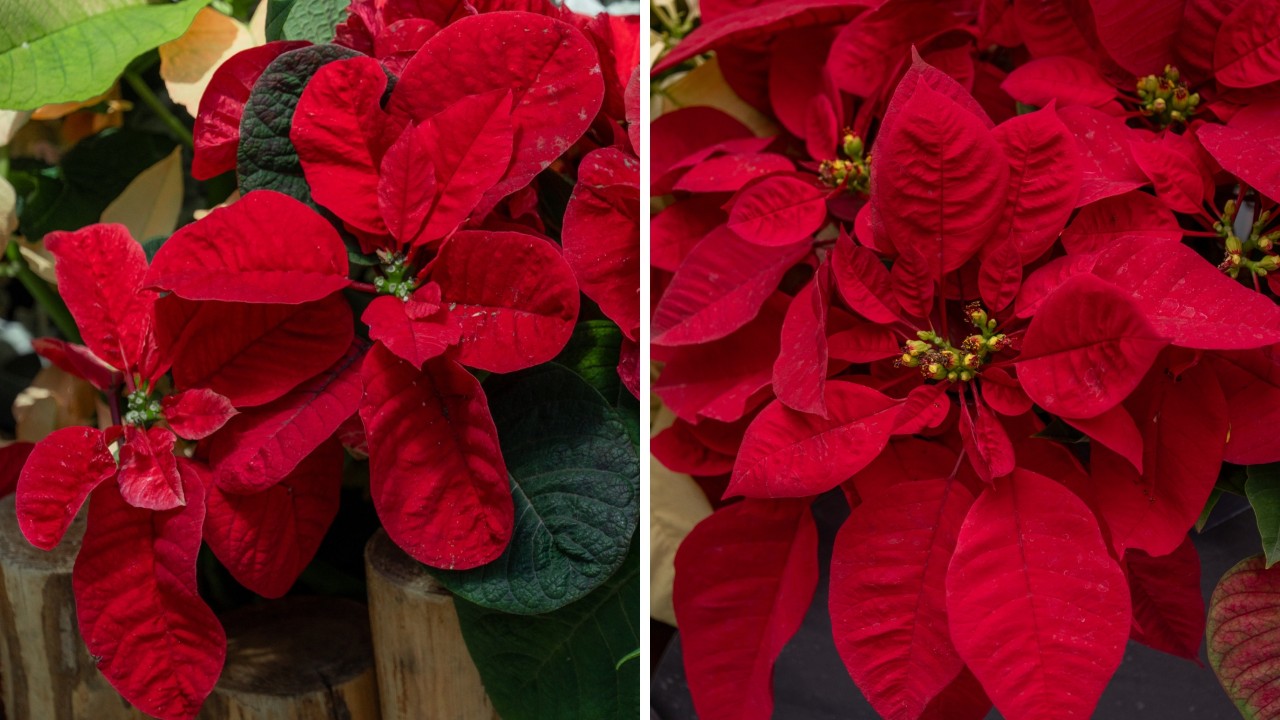 Can you spot the difference between the bracts of Euphorbia pulcherrima ‘Christmas Mouse’ (left) and the traditional red poinsettia (right)?
Can you spot the difference between the bracts of Euphorbia pulcherrima ‘Christmas Mouse’ (left) and the traditional red poinsettia (right)?
Wild poinsettias naturally produce red bracts, but today we can find poinsettia cultivars bred to be a wide array of colours! This includes various shades of red, white, cream, pink, orange, yellow, and purple. Some cultivars even have dual gradient colours, such as Euphorbia pulcherrima ‘Viking Cinnamon’, or are speckled with a contrasting colour, such as Euphorbia pulcherrima ‘Red Glitter’.
You can see many of these varieties in this year’s Poinsettia Wishes: A Nordic Christmas. There is even one variety called ‘Christmas Mouse’ that produces rounded leaves and bracts that resemble mouse ears!
Written by: Sharifah Osman, Senior Manager (Research and Horticulture)
As an avid flora photographer, Sharifah is consistently curious about the natural world that surrounds her. So much so that she eventually pursued a career in horticulture while dabbling in botanical art and photography during her free time.
/2023-whatsblooming-raphiaaustralis-image01.jpg)
